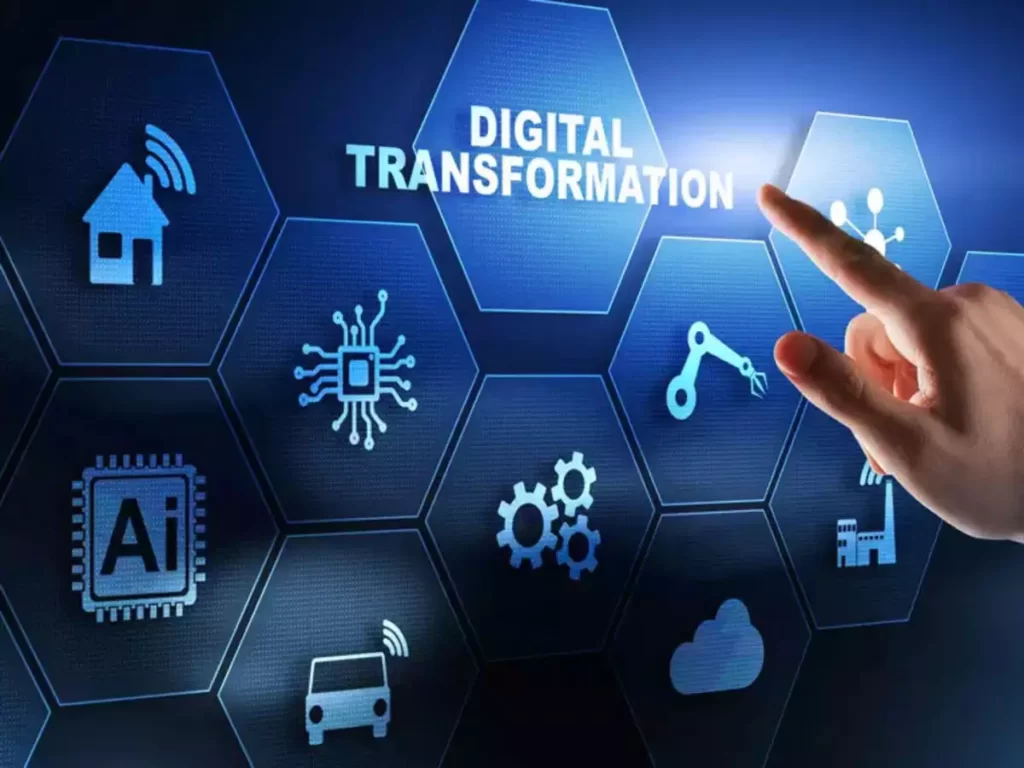Digital transformation involves the integration of digitally advanced technologies in all business aspects. It changes all the traditional non-digital business processes and services into digital ones. It helps organizations evolve with time, enhance their business operations and stay competitive in the market. It develops brand image by enhancing customer experience.
FastMR Brief:
- Around 89% of the organizations have digital transformation strategies or are working on continuously updating these strategies across verticals.
- Over USD 100 trillion is expected to be added to the world economy by digital transformation by 2025, per the World Economic Forum.
- Digital transformation gained momentum post-covid-19 outbreak. The covid-19 break resulted in increased adoption of digital solutions across verticals. The adoption rate of digital technologies increased significantly, leading the market to grow at over 20% CAGR by 2025.

Digital Transformation Market Insights:
The digital revolution has forced almost every organization to reinvent itself in its business growth strategies. Increased competitiveness among organizations and substantial growth opportunities are driving the growth of digital transformation.
Digital transformation is the most critical growth driver, as the business executives said in a PwC survey. It is likely to help MSMEs grow in this digital era, said Manish Gupta, VP & GM, Infrastructure Solutions Group, Dell technologies.
New regulatory standards like GDPR, which have been implemented due to high-profile data breach scandals, are also providing an impulse for organizations to transform digitally.
Organizations are stressed to make important decisions about business areas that do not involve digital technology. Companies emphasize accelerating digitization of supply-chain interactions, customers, and internal operations. The adoption of digital technologies is increasing significantly with rising databases in organizations across industries.
Most organizations are opting for on-premise deployment due to its benefits of customizing the product per organizational needs. It helps the organizations to comply with different regulations and guidelines. It also provides high security and information confidentiality widely used in large organizations.
Large enterprises are mainly adopting digital solutions as they possess a large amount of data and are financially fit to invest capital in advanced technologies. Increasing awareness among small business enterprises will likely drive market growth significantly in the coming years.
Data exchange is the organization’s key challenge, particularly in the BFSI and healthcare industries. It must be balanced with mitigating risk capabilities. The required technology to implement digital transformation without systematic planning and budget allocation are other challenges various companies face.
The banking and financial sector is the key end-user industry of digitally advanced technologies as the players in this industry are focusing on providing enhanced product experience to its consumers. The high demand for remote functioning capabilities is further driving the adoption of digital transformation in the BFSI sector. The IT & telecom sector is another critical end-user of digital technologies due to the presence of a large set of data in the organizations. The adoption of these technologies in the retail sector is expected to increase substantially due to the growing prominence of e-commerce and customization.
Some commonly used digitally advanced technologies by businesses include cloud computing, analytics, cyber security, artificial intelligence, and the internet of things. Among these digital technologies, the internet of things dominates the most commonly used digital transformation technology across organizations.
Artificial Intelligence technology will likely incorporate Digital Transformation into the processes and products of at least 90% of new enterprise apps by 2025. As per the International Data Corporation, the direct digital transformation investment is forecasted to reach around USD7 trillion with a CAGR of 18% from 2020 to 2023.
Geographically, North America held the largest market share in 2021 and is expected to continue its dominance during the review period. The market growth in the North America region is primarily driven by the early adoption of digitally advanced technologies coupled with a high internet usage rate. In the US Presence of key market players such as Microsoft Corporation and Hewlett-Packard Development Company, LP is another key factor favoring the regional market growth.
Increasing adoption of advanced technologies in developing countries such as China and India, coupled with the various government supporting initiatives, is expected to propel the market growth in the Asia-Pacific region. Expanding digitalization and easy access to the internet are the two crucial factors likely to significantly add to the market growth.
The next-gen companies are leveraging technology to reach a larger audience. The top companies are focusing on spending twice as much of their overall digital and tech budgets on building new digital businesses as per McKinsey Global Survey of Executives. Some key players providing digital solutions include Apple Inc, CA Technologies, Accenture, Dell, Hewlett-Packard Development Company, LP, Microsoft Corporation, and others.
















